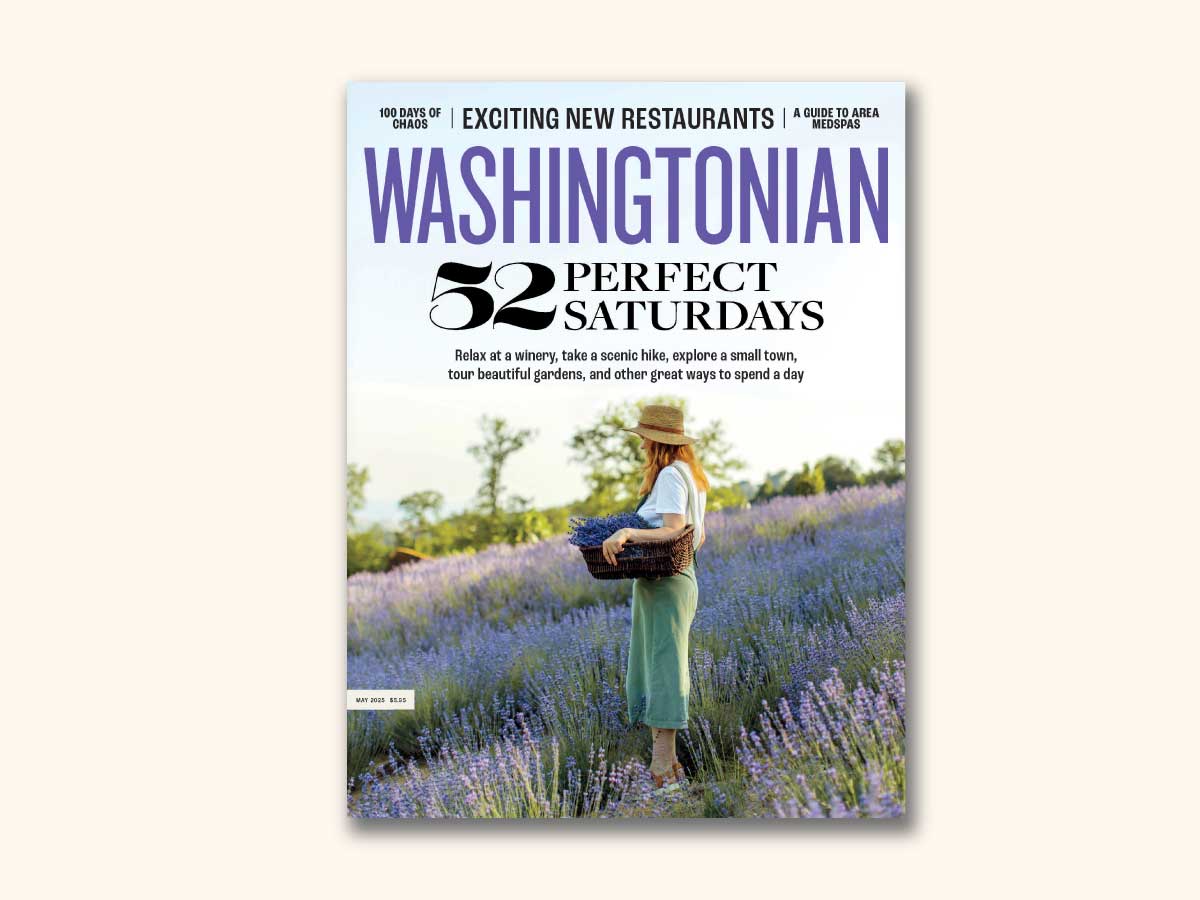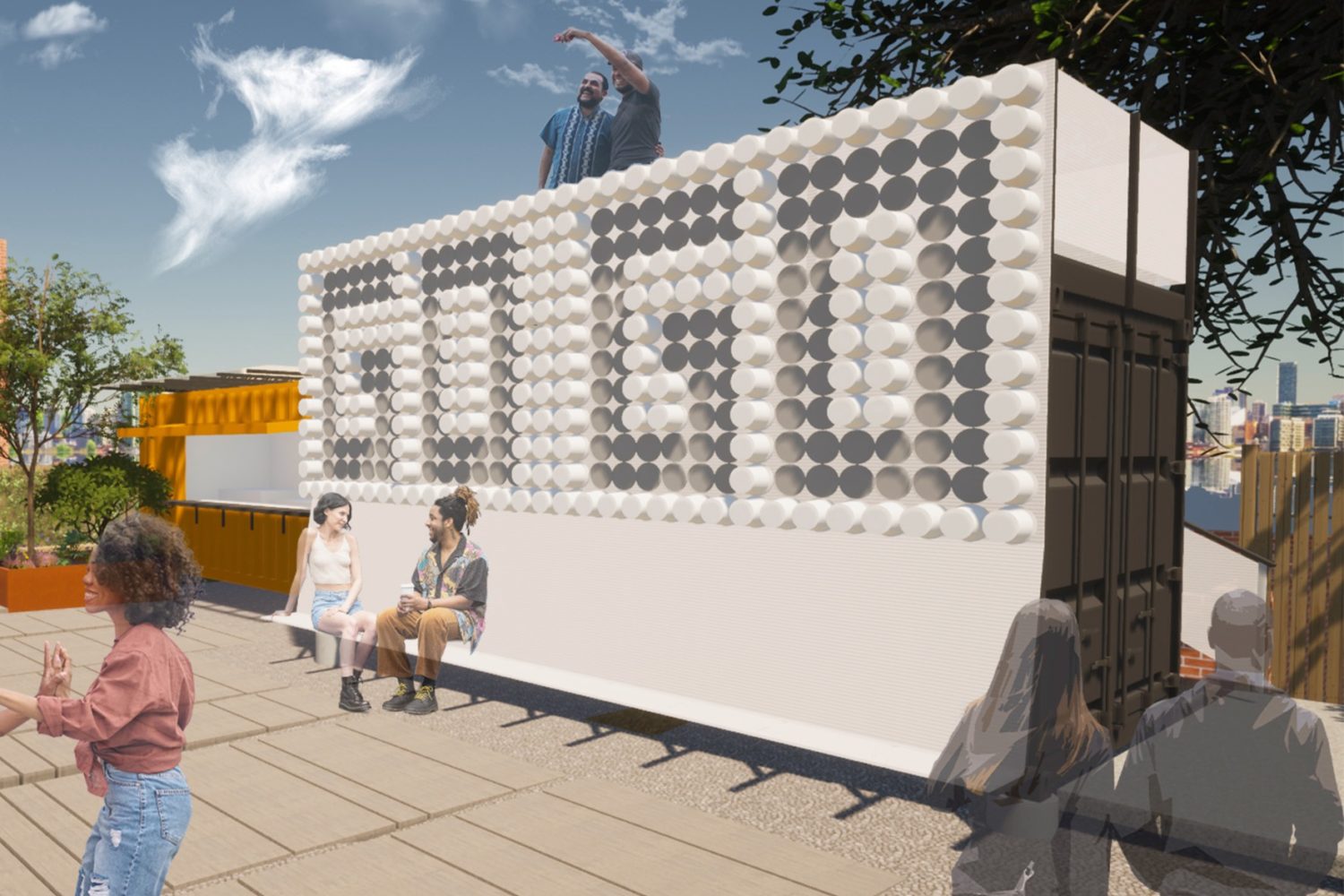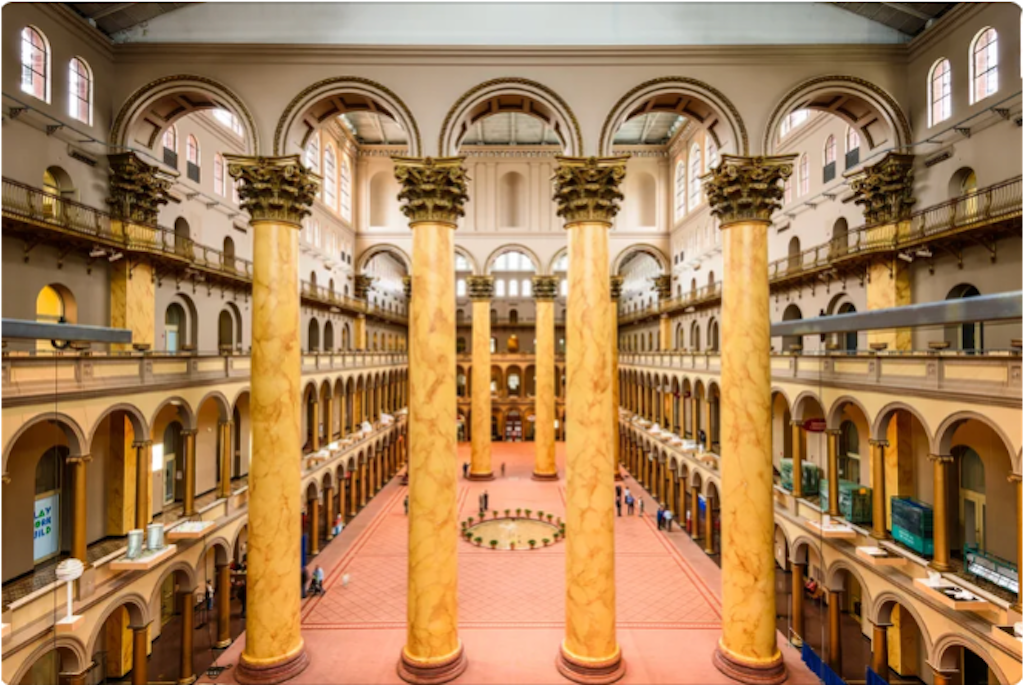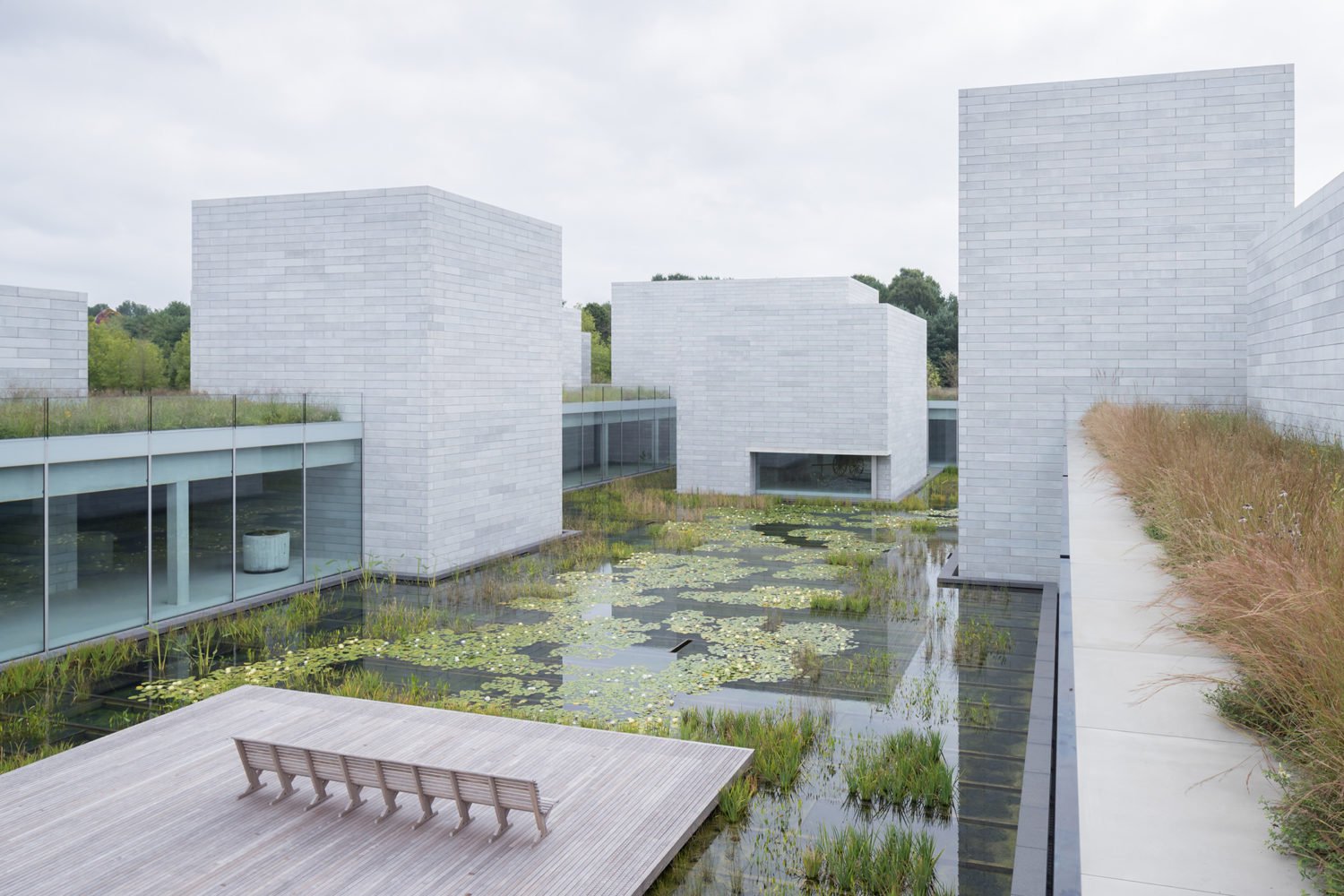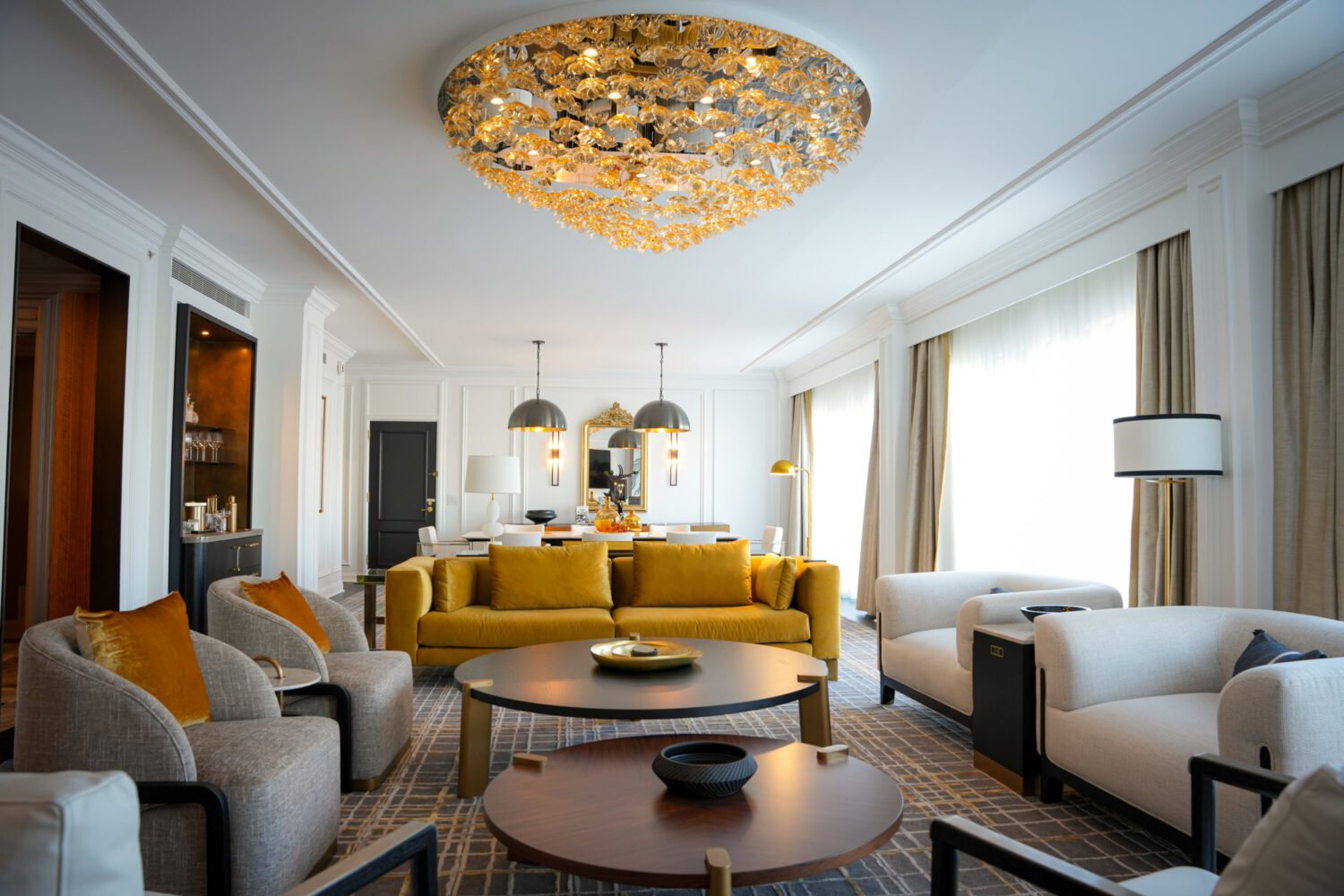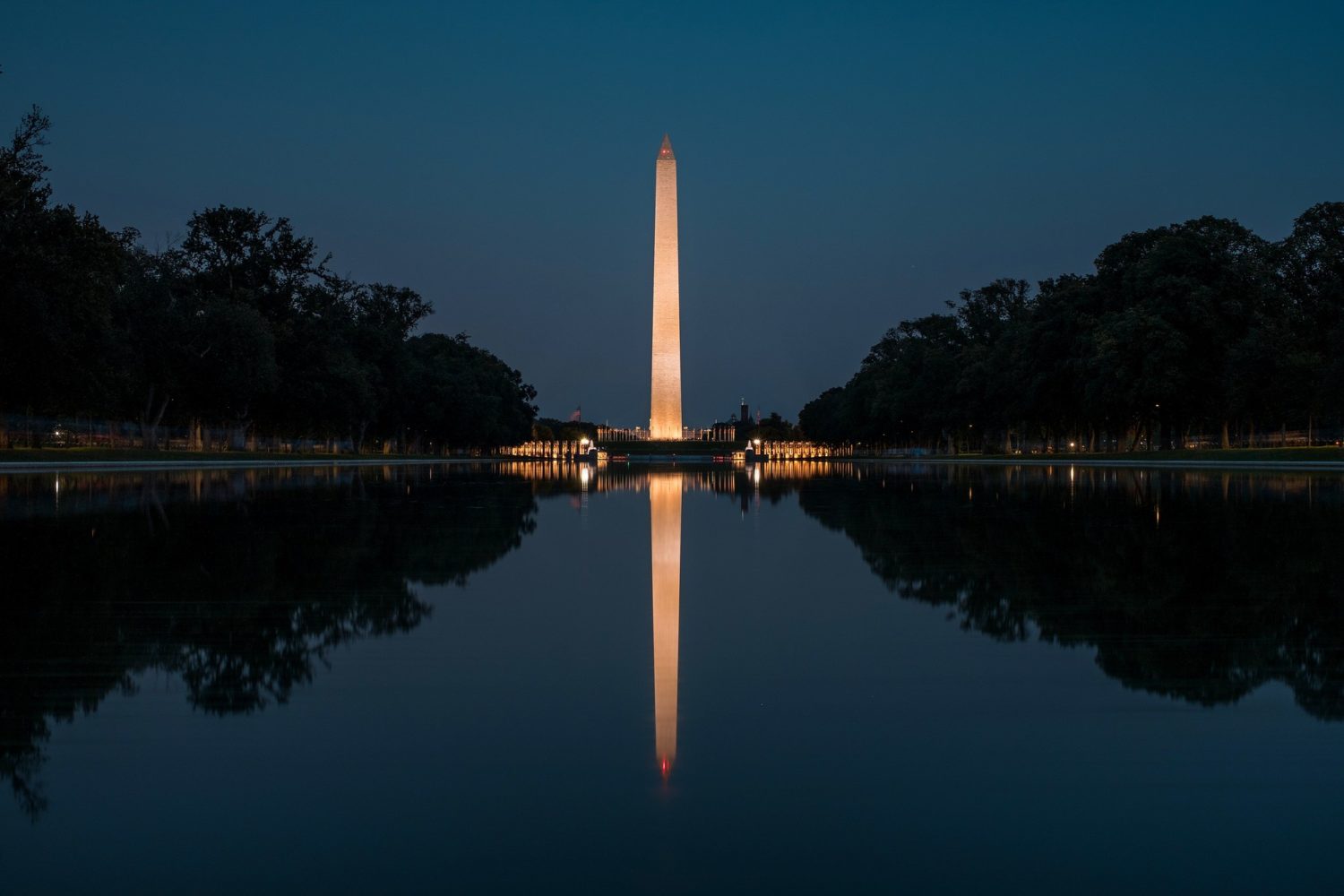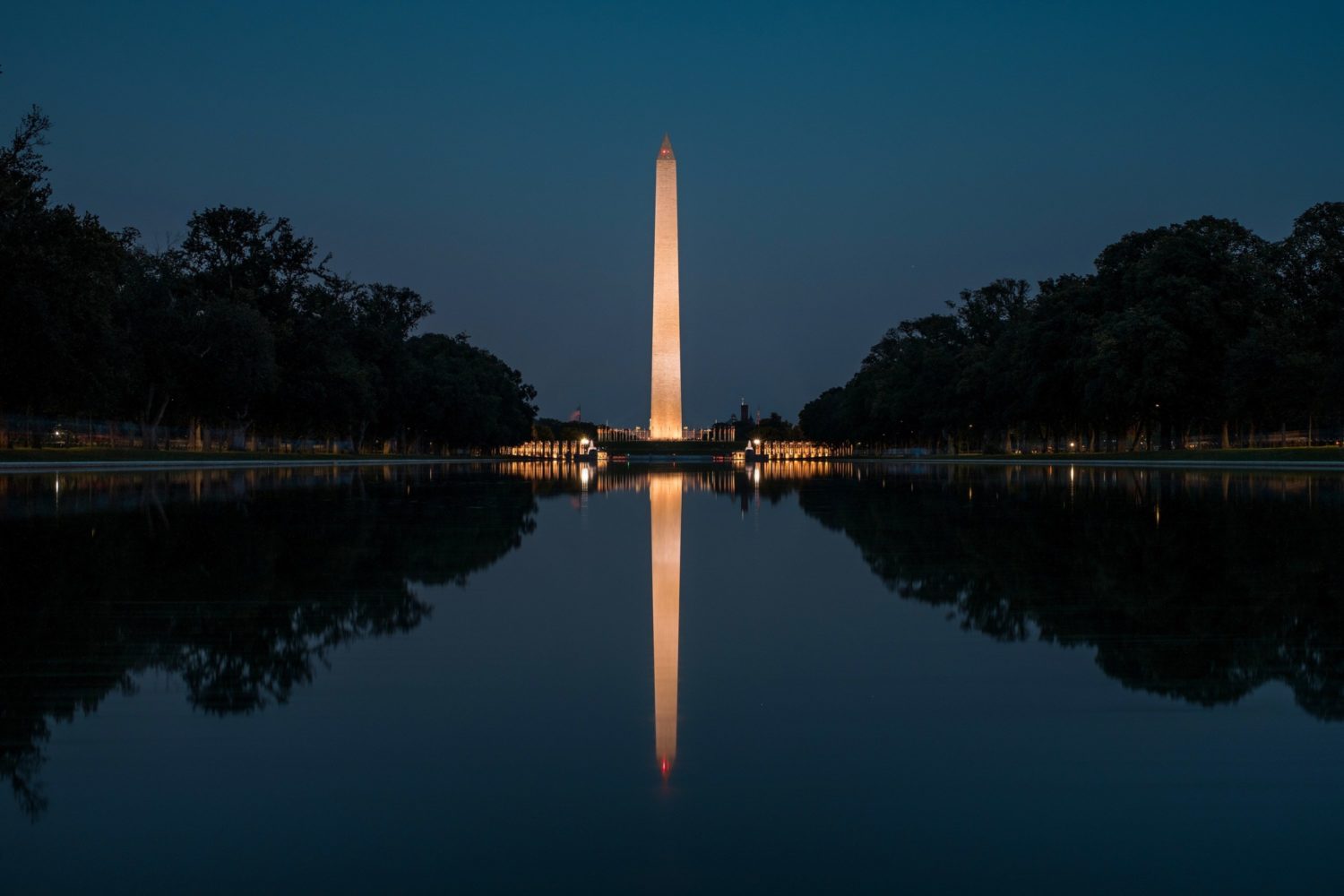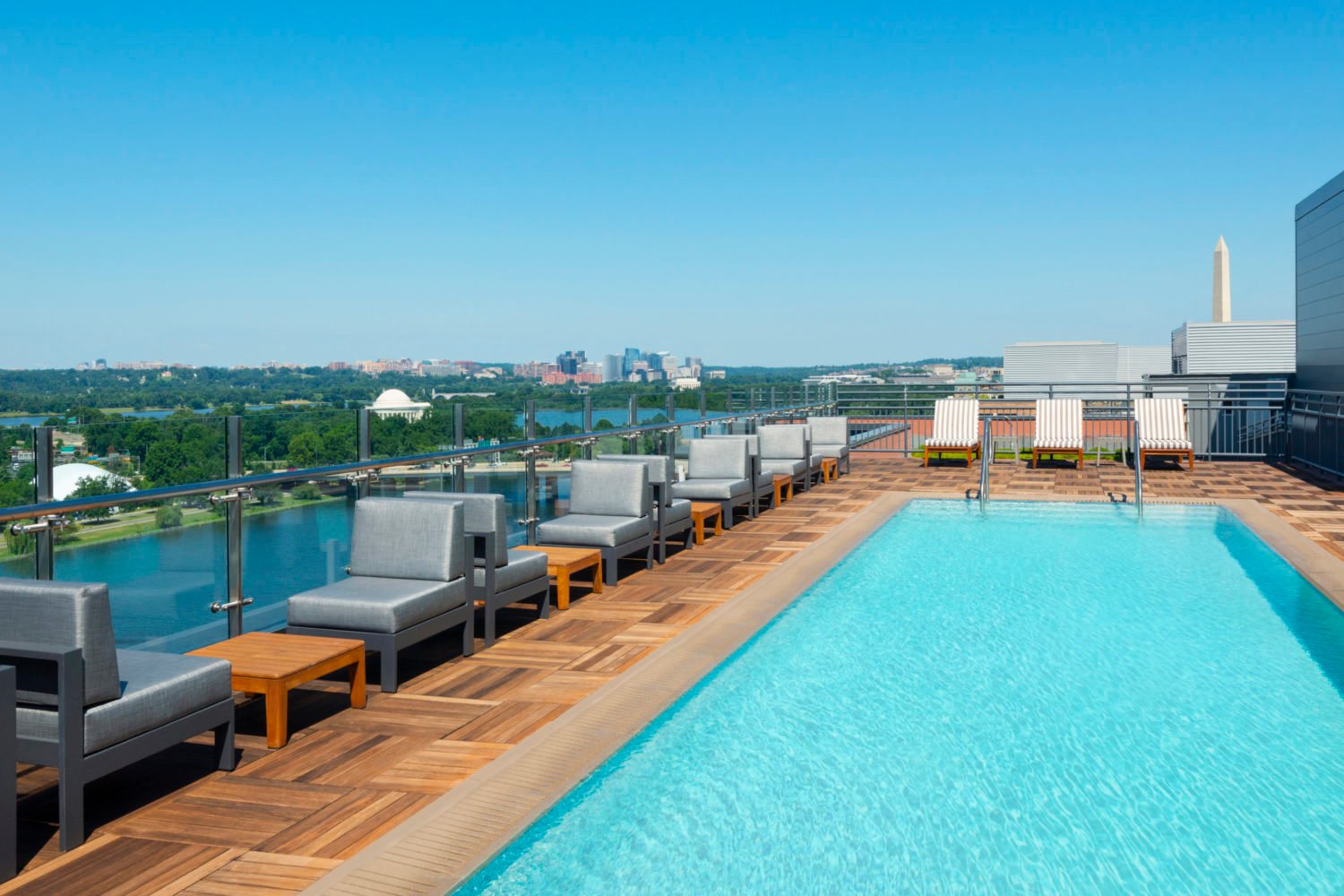National Air and Space Museum
Among the most visited Smithsonian institutions, the National Air and Space museum is home to the world’s largest collection of air and spacecraft, as well as interactive flight simulators, a planetarium, Imax movies, and more. Initially signed into law by President Truman as the National Air Museum in 1946, the museum was renamed the Air and Space Museum in 1966 by President Johnson.
Having moved to its current home on the National Mall in 1976, the museum began undergoing a multi-year renovation in 2018, including an update of its exterior facade, which was finished in 2023, and a redesigning of all 20 exhibition rooms. Eight exhibition rooms, the planetarium, museum store, and the cafe reopened in 2022. Expected to open in spring 2025 are the Lockheed Martin IMAX Theater, and two additional exhibition rooms—including the Boeing Milestones of Flight Hall, which displays the Bell X-1 in which Chuck Yeager broke the sound barrier, and the Friendship 7, in which NASA astronaut John Glenn became the first American to orbit the Earth; and the Barron Hilton Pioneers of Flight Hall, which celebrates the 1920s and 30s era of aviation.
Sixth ST. and Independence Ave., SW; 202-633-1000; nasm.si.edu. Metro station: L’Enfant Plaza/Smithsonian. Free; timed-entry passes are required.
National Air and Space Museum Steven F. Udvar-Hazy Center
Located near Dulles Airport, the Air and Space Museum’s annex includes some of the larger items from the collection spread out over 340,000 square feet. Open since 2003, the center includes the Enola Gay, the Boeing airplane that dropped the first atomic bomb on Hiroshima, an Air France Concorde, and a Gemini VII space capsule.
The Udvar-Hazy Center also has flight simulators and an Imax theater, as well as an observation tower from which visitors can watch planes land at Dulles.
Steven F. Udvar-Hazy Center, 14390 Air and Space Pkwy., Chantilly; 202-633-1000; nasm.si.edu/udvarhazy. Not Metro accessible. Free.
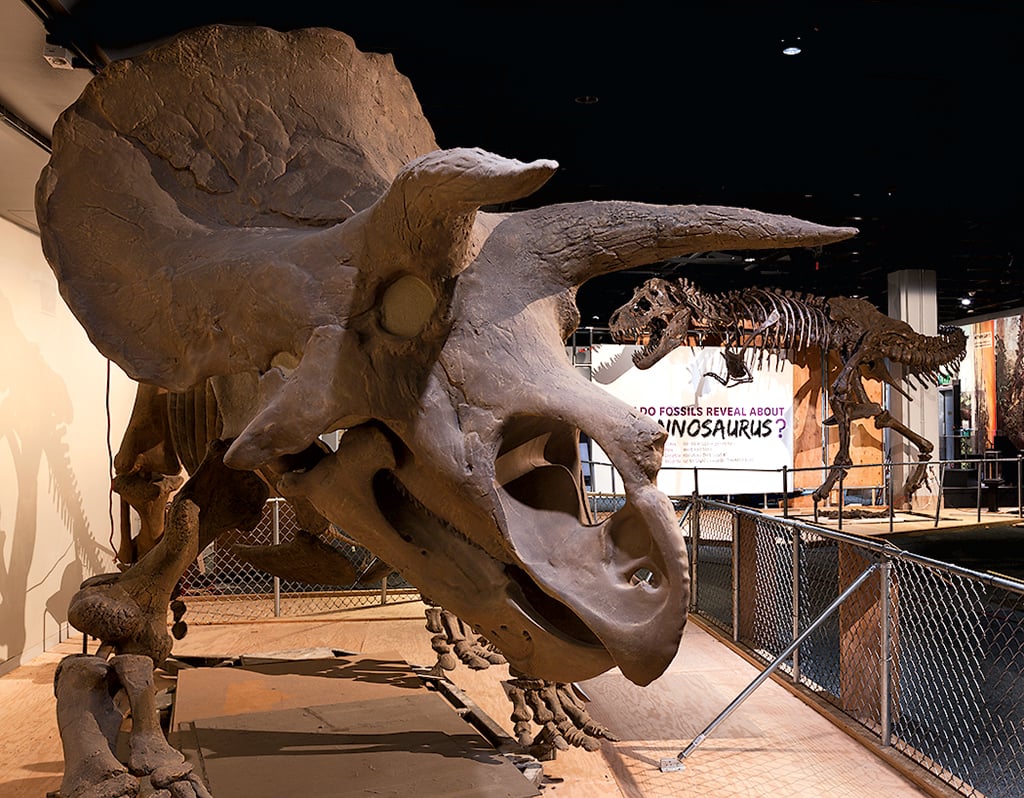
National Museum of Natural History
In 2024, the Natural History Museum had more than 3.9 million visitors, making it the most popular of the Smithsonian museums. It’s also one of the oldest on the Mall, having sat in its domed Beaux-Arts building since 1910. The museum owns more than 126 million items in more than 1.5 million square feet of exhibits. It was originally founded in 1846, at the same time as the Smithsonian Institution; construction on the new building was halted in 1905 because Smithsonian leaders objected to the French-influenced design of the museum’s entrance, which was subsequently simplified.
The Constitution Avenue entrance leads to a lobby where an Easter Island statue stands guard; exhibitions include a 1.6-million-year-old Kenyan hand-ax and Northwest Coast totem poles. On the first floor, a 13-foot Fénykövi elephant from Angola sits under the central dome in the rotunda, while the adjacent Sant Ocean Hall is dominated by the model of a North Atlantic right whale. Upstairs on the second floor, the 45.52-carat Hope Diamond is the centerpiece of the Gems and Minerals gallery, and the Butterfly Pavilion allows visitors to walk through an indoor garden surrounded by hundreds of live butterflies and moths (at press time, the exhibit was temporarily closed for maintenance so check before you visit; tickets are $8/adults and $7/children and seniors). The nearby Insect Zoo features creepy crawlies, including live tarantulas, cockroaches, and bees. An Imax theater on the first floor shows nature movies on six-story-high screens.
Tenth St. and Constitution Ave., NW; 202-633-1000; naturalhistory.si.edu. Metro station: Federal Triangle/Smithsonian. Free.
National Zoo
Set on 163 acres in Northwest Washington, the National Zoo was founded in 1889 to inspire the “advancement of science, the instruction and recreation of the people.” Since the 1960s, the zoo has worked toward conserving and breeding endangered species; its 3,200-acre complex in Front Royal, Virginia, serves as the headquarters for the Smithsonian Conservation Biology Institute. The zoo’s DC space is home to about 2,000 animals of 400 different species, the stars of which are undoubtedly the giant pandas, Bao Li and Qing Bao, who arrived here on loan from China in January 2025. The panda exhibit leads into the Asia Trail, which includes clouded leopards, red pandas, sloth bears, and fishing cats. The zoo’s comprehensive Asian Elephants exhibit currently houses six elephants, but is large enough to house up to ten.
The park also includes a Reptile Discovery Center with turtles, snakes, alligators, Komodo dragons, and more; a recently renovated and reopened Bird House with more than 170 individual birds representing 56 species; a Great Cats exhibit with Sumatran tigers and African lions; a Great Ape House; and several other exhibits. Don’t miss Amazonia, a 15,000-square-foot rainforest exhibit with a 55,000-gallon aquarium and more than 350 species of tropical plants.
3001 Connecticut Ave., NW; 202-673-4888; nationalzoo.si.edu. Metro station: Woodley Park-Zoo/Cleveland Park. Free; entry passes required.

National Geographic Museum
**Opening in 2026
Part of the National Geographic Society, this museum will host exhibits that are often hands-on and high-tech. As you’d expect from the esteemed 124-year-old society, programs focus on science, nature, space, history, and culture, with lots of child-friendly features.
1145 17th St., NW; 202-857-7588; nationalgeographic.org/society/museum-of-exploration. Metro Station: Farragut North/Farragut West.
United States Botanic Garden
Another indoor/outdoor spot, this giant “national greenhouse” on the Mall was initially conceived in 1816, and opened to the public in 1850. One of the oldest botanic gardens in the country and set on three acres, the gardens consist of three parts: a conservatory containing more than 44,000 plants, the National Garden outside, and Bartholdi Park across the street. Built in 1933, the conservatory features almost 30,000 square feet of space and includes an orchid court, a desert garden, a children’s garden with activities, and an oversize jungle area in the center with a viewing balcony from which to observe the tropical plants and vines.
The National Garden includes a rose garden and an amphitheater made from the marble steps of the Capitol’s old east portico, a butterfly garden, and a water garden dedicated to the First Ladies of the United States, while Bartholdi Park has a spectacular, recently restored fountain as its centerpiece.
100 Maryland Ave., SW; 202-225-8333; usbg.gov. Metro station: Capitol South/Federal Center. Free.
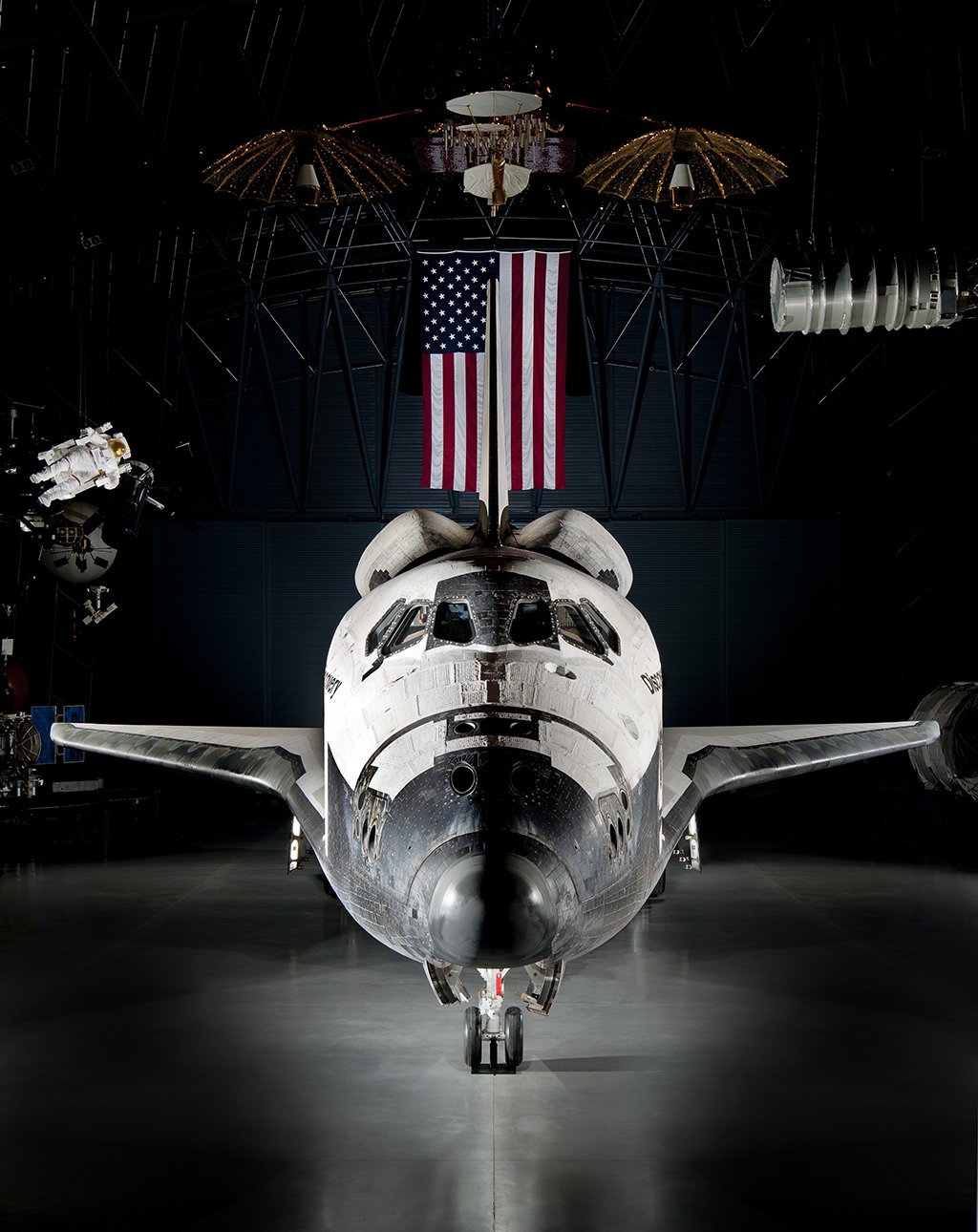
United States National Arboretum
Visitors can bike, walk, or drive through the National Arboretum’s 446 acres to see dogwood and magnolia collections, stroll through a grove of state trees, and check out the National Bonsai & Penjing Museum, which keeps its own, shorter hours. As at the Botanic Garden, remnants of the Capitol’s old east portico can be found here; marble columns stand among a reflecting pool near the center of the grounds. The arboretum is especially well known for its magnificent collection of azaleas, which typically bloom between April and May. The collection was threatened by a lack of funding in 2010 but was saved by an anonymous donation of $1 million. The Perennial Collection includes flowering peonies, daylilies, daffodils, and more; the National Herb Garden is home to holly, juniper, pansies, and over 100 varieties of roses.
3501 New York Ave., NE; 202-245-2726; usna.usda.gov. Not Metro accessible. Free.



